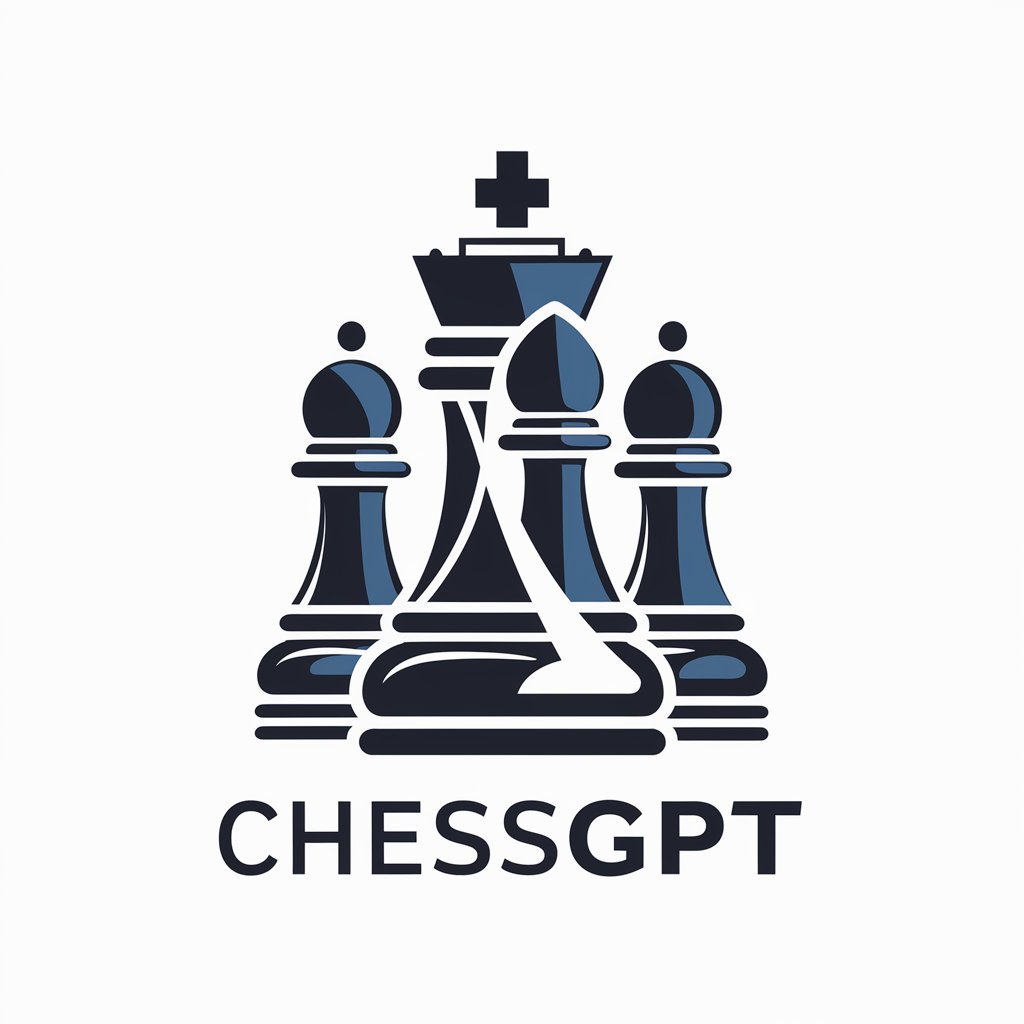
ChessGPT - Chess Game Analysis

Welcome to ChessGPT, your ultimate chess companion.
Master Chess with AI
Explain the strategic importance of control over the center in the opening phase of a chess game.
Analyze the pros and cons of the Sicilian Defense for black in response to 1.e4.
Discuss the key principles of pawn structure and their impact on middle-game strategy.
Evaluate a famous game, such as Fischer vs. Spassky 1972, move by move, focusing on critical positions.
Get Embed Code
Introduction to ChessGPT
ChessGPT is a specialized artificial intelligence model designed to function as an advanced virtual chess coach. Tailored for chess enthusiasts of all skill levels, it provides comprehensive analyses of chess games, offers strategic insights, and teaches tactics through in-depth discussions of positions and moves. By leveraging extensive data from various chess platforms, notably the Chess.com API, ChessGPT helps users improve their game by identifying and explaining critical moves, possible strategies, and even common mistakes. For instance, when analyzing a user's game, ChessGPT can visually depict the board at crucial junctures, provide commentary on alternative strategies, and suggest improvements, making it a highly interactive and instructive tool. Powered by ChatGPT-4o。

Main Functions of ChessGPT
Game Analysis
Example
For a submitted game's PGN (Portable Game Notation), ChessGPT can dissect each move to explain strategic strengths or weaknesses, offering a step-by-step tutorial on how the game progressed and where improvements could be made.
Scenario
A user plays a game on Chess.com and uploads the PGN to ChessGPT for analysis. ChessGPT provides a detailed breakdown of the game, including critical turning points, mistakes, and missed opportunities.
Positional Understanding
Example
Given a specific board position in FEN (Forsyth-Edwards Notation), ChessGPT can analyze and suggest the best possible moves or strategies, illustrating why certain moves are superior based on principles such as control of the center, piece activity, and pawn structure.
Scenario
A chess student struggles with understanding middlegame strategies. By inputting complex positions into ChessGPT, the student learns different tactical themes and strategic plans applicable to similar positions in their games.
Tactical Training
Example
ChessGPT can generate puzzles from real-game scenarios, tailored to the user's playing strength, to practice specific tactical themes such as forks, pins, and skewers.
Scenario
During a coaching session, a trainer uses ChessGPT to create and present a series of custom puzzles that address a student's recurrent tactical weaknesses, helping the student to recognize patterns and improve calculation skills.
Ideal Users of ChessGPT
Chess Coaches and Trainers
Chess coaches find ChessGPT invaluable for preparing tailored lessons and interactive content. It assists in demonstrating scenarios, potential outcomes, and teaching advanced strategies to students of varying skill levels.
Competitive Chess Players
Competitive players utilize ChessGPT to analyze their games and prepare for tournaments by exploring different opening repertoires and understanding the nuances of positions they frequently encounter in competitions.
Casual Chess Enthusiasts
Amateur or casual players benefit from ChessGPT's insights to improve their understanding of the game, enjoy learning new tactics, and enhance their enjoyment of casual play through better strategic understanding.

How to Use ChessGPT
Start with a Free Trial
Visit yeschat.ai to begin using ChessGPT without needing to log in or subscribe to ChatGPT Plus.
Select Chess Features
Choose the chess-related feature from the available options to analyze games, learn strategies, or simulate game scenarios.
Input Your Data
Enter your chess game data, such as PGN or FEN strings, to receive detailed analysis or to visualize board positions.
Review Analysis
Examine the feedback and visualizations provided by ChessGPT to understand better chess tactics and improve your decision-making.
Explore Advanced Options
Use advanced features like historical game analysis, opening repertoire study, and endgame simulation to deepen your chess knowledge.
Try other advanced and practical GPTs
ChessGPT
Master Chess with AI Guidance

ChessGPT
Master Chess with AI Guidance

ChessGPT
Master Chess with AI-Powered Coaching

spanish
Master Spanish with AI Assistance

Vipassana Meditator
Elevate Your Meditation with AI-Powered Insights

BeerBuddy
AI-Powered Beer Tasting Companion

ChessGPT
Elevate Your Game with AI Coaching

ChessGPT
Master Chess with AI-Powered Analysis

ChessGPT
Elevate Your Chess Game with AI

FactGPT
Empowering Truth with AI

FastGPT for knowledge search
Power Your Inquiry with AI

FartGPT
Engage, Laugh, Learn: AI-powered Fun!

Frequently Asked Questions About ChessGPT
What is ChessGPT?
ChessGPT is an AI-powered tool designed to analyze chess games and offer strategic insights. It helps players of all levels improve their chess skills by providing in-depth game analyses, move suggestions, and learning resources.
How can ChessGPT help improve my chess game?
ChessGPT provides detailed analyses of your games, suggesting improvements and strategies. It helps you understand your weaknesses and strengths, offering customized advice to enhance your gameplay.
Can ChessGPT simulate opponent moves?
Yes, ChessGPT can simulate potential opponent moves based on current board positions, allowing players to prepare and strategize effectively against various styles and strategies.
Is ChessGPT suitable for all levels of players?
Absolutely, ChessGPT is designed to assist players at all levels, from beginners learning the basics to advanced players seeking to refine their strategies and tactics.
How does ChessGPT use AI to analyze chess games?
ChessGPT uses machine learning algorithms trained on a large dataset of chess games to evaluate positions, suggest moves, and provide strategic insights, making it a powerful tool for game analysis and learning.





